Want to know how important the new Corsa is to Vauxhall? It’s the company’s most profitable car. One in three Vauxhalls sold is a Corsa. Even last year, late in its model cycle, Vauxhall shifted 85,000 of them in the UK. Four per cent of all new cars sold here is a Corsa.
And half the people who buy them are spending their own money. They’re not fleet buyers, they’re private punters, and you upset those at your peril.
The new Corsa, then. It is not radical. It is not outlandish. It takes the previous formula – which was not an unsuccessful one – and refines it. More economy, more refinement, a heated windscreen, more safety systems and lower running costs: all are promised.
Most are delivered, as we found out on in our first drive. Whether they are enough to take the Corsa from middle-order to class front-runner is another matter entirely.
We’ve come to suburbia to find out, shooting around a housing estate in the south east that’s like so many others. It’s where private buyers pick from options sheets and choose new-build, broadly-similar homes on finance; where colours and specs and costs sway them one way or another. These cars fit in well here.
The journey to our urban destination features motorways, town roads and a few country lanes. A modern supermini should be easily comfortable on all three.
Best among them, by our reckoning, has hitherto been the Ford Fiesta, by a nose. Primarily that’s because we’re an enthusiasts’ magazine and it is the most pleasing car in the class to drive, with slick steering, keen body control and the kind of dynamism, even on base models, that you’d do well to find in lukewarm versions of the opposition.
It arrives here with spec slightly out of kilter with the others, because that’s all we could borrow. But no matter that it arrived burdened with two additional doors, and that it’s slightly down on power.
The 1.0-litre, turbocharged three-cylinder engine making 99bhp isn’t far behind; and from experience we know it’s a revvy, peppy, smooth piece of kit. In Zetec trim it’s priced at £14,545.
Read the full Volkswagen Polo review
Then there’s Volkswagen’s Volkswagen Polo. If you’re choosing a supermini you need a pretty good reason not to look at one. Memory and experience tells us it majors on perceived quality and refinement instead of dynamism, which is no bad thing. It comes to us with the same number of doors as the Corsa, and is closer on power.
The Polo has a four-cylinder 1.2-litre turbo and makes 109bhp. It costs £15,610; expensive, but that’s because it’s an SEL. You can buy one that’s priced more in line with the Corsa but it’s SE Design, which means you only get 89bhp. The short of it, then, is that the Polo asks a premium. We’ll see if it warrants it.
So to the Corsa. It’s the same model we tested in the first drive. A three-door, 1.0-litre turbo petrol, with a new three-cylinder engine and in SRi-VX Line 115 form; not a sporty specification for the most part, but including 17in wheels and some red flashes on the interior.
Fact is there’s too much intrinsic value in the ‘SRi’ tag for Vauxhall not to use it, even if the suspension or intent doesn’t warrant it. But with 114bhp the Corsa is the most powerful car here and, at £14,460, also the cheapest.
Does it feel the cheapest? Inside, not particularly. Elements of the dashboard have received some Adamification, but Vauxhall hasn’t overloaded the Corsa with highlights from its premium city car. Supermini drivers are too conservative to yield to that sort of thing.
Instead, then, the Corsa’s dashboard has a new touch-screen, through which the entertainment and communications systems are controlled, with only a few supplementary buttons – city steering, door locks and the like – remaining on the dash. Below are conventional dials for the heating and ventilation; though not of high material quality.
The rest of the cabin materials are as good as you’d expect – no more, but no less. Piano-black plastic adorns most of the dash, firm plastics abound, but the steering wheel and stalks – the pieces your fingers touch most – feel of reasonable quality and the driving position is comfortably adjustable.
It out-does the Fiesta in many respects. The Ford doesn’t show the same consistency of material choices. The Corsa’s steering wheel feels more pleasing to the hands and the Ford has an untidy upper dash.
There is nothing wrong with having buttons on the console, but the Fiesta’s controls are far from an ergonomic delight, and the large centre heater dial in the dash centre clicks with no more refined a feel than a washing machine’s dials. The faux silver plastic on the wheel is too obviously plastic, as well.
But the driving position is a match for the Vauxhall’s; a couple of our testers felt the driver’s seat could be a little lower, but most thought it comfortable.
All of our drivers, though, agreed that neither the Vauxhall nor the Ford’s interiors were a match for the Polo’s. Volkswagen has great consistency across its models. I think you’d know you were in a VW, blindfolded, whether you were in an Up or a Phaeton, such is the consistency of material choices and the slickness of control weights.
Read the full Ford Fiesta review
The Polo is the only one of these three to use metallic highlights successfully – the rings around the dials, on the dash buttons and the gearlever. These little slivers lift what is, otherwise, a fairly austere cabin.
But even if there are hard surfaces in here, they’re satin, not shiny, and the weighting and slickness of all the controls – major and minor – make it feel the most complete piece of design of the three. Not the most interesting, not the most alluring, but the one you’d be happiest to stay in for hours. The driving position is superb, too, with a hugely adjustable wheel and the lowest-set seat of the trio.
Rear accommodation is also good in the Polo. Truth is, it’s fine in all – you can carry four adults should you choose.
Set with my driving position, the Fiesta gives slight advantage to the Polo, which gives more again to the Corsa; which is not surprising given the Corsa breaches four-metres in length and has the longest wheelbase. But none is uncompetitive. There just isn’t that variation in the class. There’s only 10 litres between the seats-up bootspace of these three. On paper, they’re millimetrically different.
On the road, the differences are rather more marked. And in the first instance, the Corsa pulls an advantage. The new 1.0-litre triple engine is excellent. It pulls well from low revs, and maintains its enthusiasm at high revs, not that there’s great reason to go there. There’s a touch of bump and notch on the six-speed box, but it’s positive.
It makes the Ford’s triple – hitherto a paragon in the 1.0 class – start to feel ordinary. Not that it is, mind; its economy, noise and refinement are still strong. But the Corsa has moved things onwards.
The Fiesta, with this power output, only gets a five-speed box, but it’s so long geared – it can reach 60mph in second and spins at 3250rpm at 90mph in top – that it hardly matters.
Such is the flexibility of the Ford triple too that, although the quoted 0-62mph time is 11.2sec, it doesn’t feel overwhelmed by its rivals. The Corsa’s claimed 0-62mph time is 10.3sec and the Polo’s 9.3sec.
But all are capable of accelerating even once at motorway speeds without changing down a gear. There’s less in it than the figures suggest. The Polo feels comparatively quick, but it’s also smooth, with low road noise levels, and has the best gearshift of the three, via its notch-free, easy six-speed gearbox.
If there’s an area of the powertrain where the Corsa’s not on top of its game, it’s the way it consumes. During their time with us, these three didn’t follow the same route – so a like-for-like fuel consumption comparison can’t be had. But we do know that the Corsa is a 115g/km car, the VW a 110g/km one, and the Ford, at 99g/km, is the only one to break the 100g/km barrier.
It’s also the one most likely to put a smile on its driver’s face. This is only a cooking Fiesta, don’t forget, but Ford is happy to sacrifice some low-speed ride quality for better body control. Not that you’d know – it was just as comfortable as the others.
Perhaps there’s a touch more road noise – that’s another of those areas where there’s precious little in it – but the Fiesta’s taut and composed. That it rides on small wheels and 55 profile rubber probably compliments the bump absorption, while body movements and agility are so high on the agenda that the Fiesta is a particularly rewarding steer.
Read the new Vauxhall Corsa first drive review
Control weights are heavier than in either of the other two – which can make them feel more agile over the first 20 metres or so – but once you delve deeper it’s clear that the Ford has the most complete dynamic repertoire.
The Polo does what most Volkswagens do. The consistency that is present in the cabin materials is replicated by the control weights. They’re all light and smooth, which is enough to make the Polo the easiest car to drive of the three. If your commute consists of loads of low-speed, stop-start traffic, then the VW is the most relaxing choice.
More so than the Corsa, certainly; which, as it did before, falls in neither camp. That’s despite some UK-exclusive tuning for the power steering, making it more responsive off the straight-ahead to suit our twistier roads, and extensive British testing for the damping.
The ride is mostly fine, though our test Corsa betrays the fact it’s on 17in wheels from time to time around town with the odd thump. The steering, though, can feel wickedly sharp at times, pitching the Corsa at a corner and seldom settling to be free of nervousness.
The body pitches over quickly and the springs push back against body roll firmly too. The Fiesta just feels more composed, more often. The Polo feels more relaxed, but no less enjoyable.
The verdict
And it’s the dynamics, as much as anything, that seals the Corsa’s fate. A Fiesta is more rewarding to drive. The Polo is more relaxing to drive. And while the Corsa’s interior is superior in feel to the Fiesta’s, it doesn’t come close to matching the Volkswagen’s. The Corsa is a good car in its own right, but third in class, and third in test, is where it sits.
The top two are harder to decide. If you value dynamics you’ll prefer the Fiesta’s natural feel, responsive steering and fleet-footedness. I can understand that. I’d rather drive a Fiesta and therefore, for me, for us, it’s the winner.
However, I suspect most supermini buyers would prefer the relaxed, composed way the Polo does things. And given the choice, there would be as many times as not when I’d be happier to see the Volkswagen sitting on the driveway.
Read Autocar's previous comparison test - McLaren P1 versus Porsche 918 Spyder
Ford Fiesta Zetec 1.0 100 5dr
Price £14,545; 0-62mph 11.2sec; Top speed 112mph; Economy 65.8mpg; CO2 99g/km; Kerb weight 1101kg; Engine 3 cyls in line, 999cc, turbocharged petrol; Power 99bhp at 6000rpm; Torque 125lb ft at 1400rpm; Gearbox 5-speed manual
Volkswagen Polo 1.2 TSI 110 SEL 3dr
Price £15,610; 0-62mph 9.3sec; Top speed 121mph; Economy 58.9mpg; CO2 110g/km; Kerb weight 1135kg; Engine 4 cyls in line, 1197cc, turbocharged petrol; Power 109bhp at 5000rpm; Torque 129lb ft at 1500-400rpm; Gearbox 6-speed manual
Vauxhall Corsa SRi-VX Line 1.0i 115 3dr
Price £14,460; 0-62mph 10.3sec; Top speed 121mph; Economy 57.6mpg; CO2 115g/km; Kerb weight 1177kg; Engine 3 cyls in line, 999cc, turbocharged petrol; Power 114bhp at 5000-6000rpm; Torque 122lb ft at 1800-4500rpm; Gearbox 6-speed manual
Get the latest car news, reviews and galleries from Autocar direct to your inbox every week. Enter your email address below:

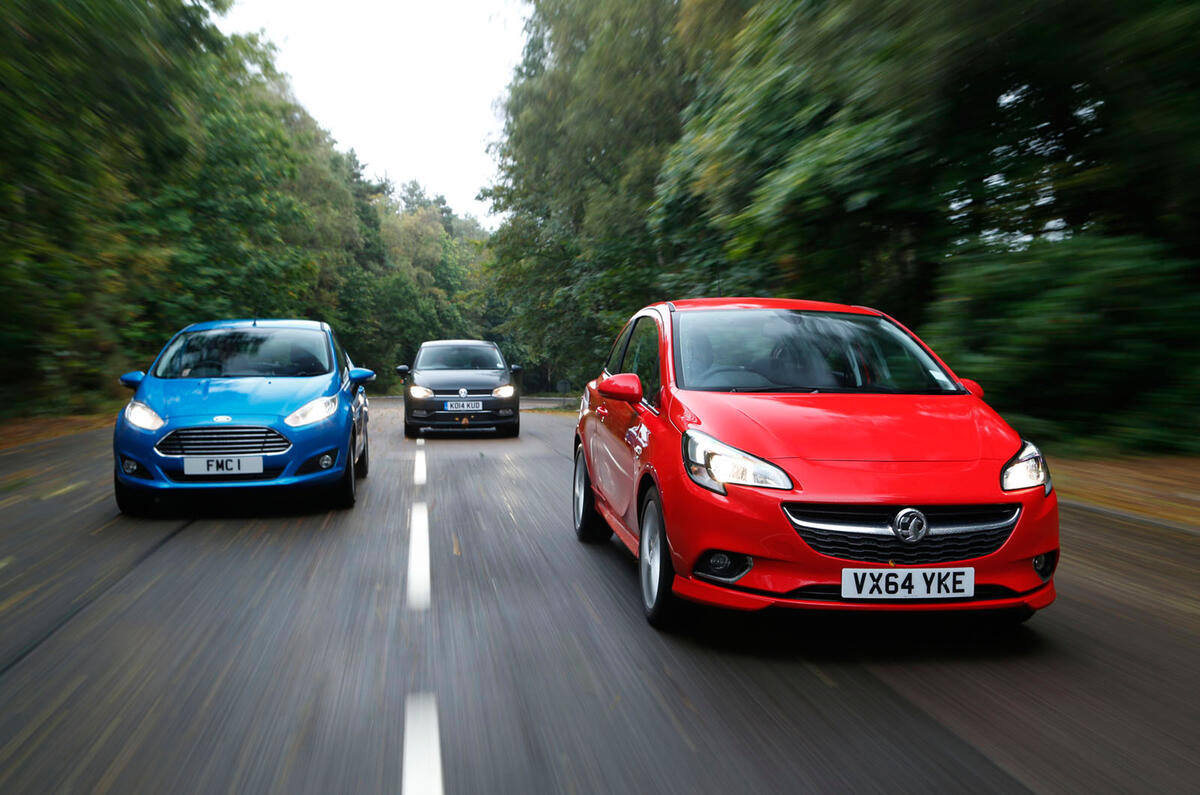
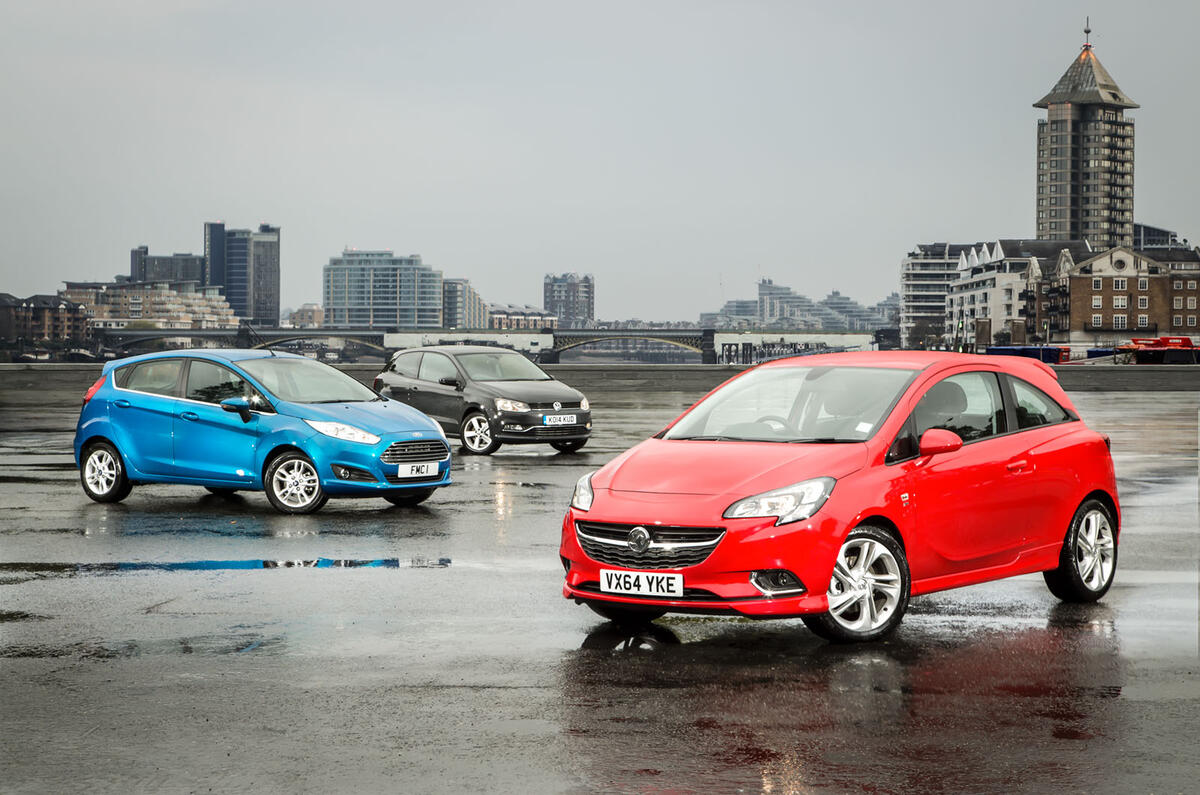
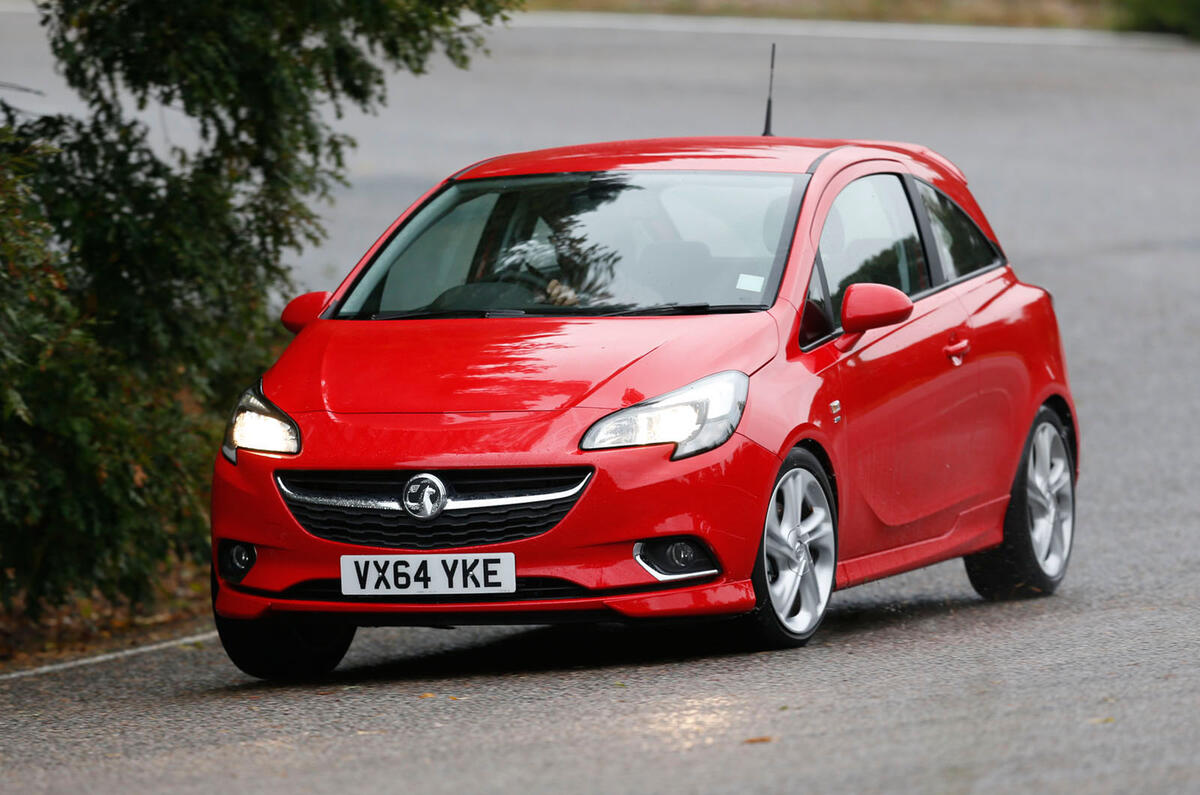
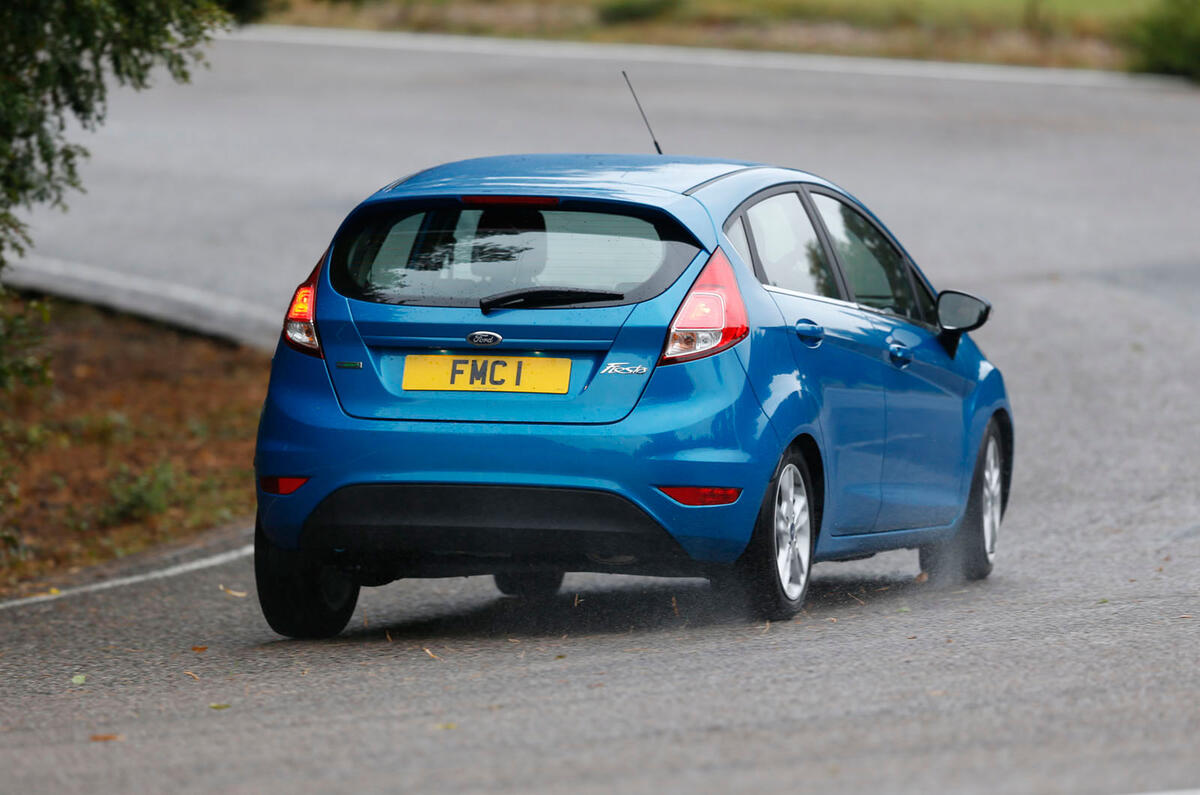
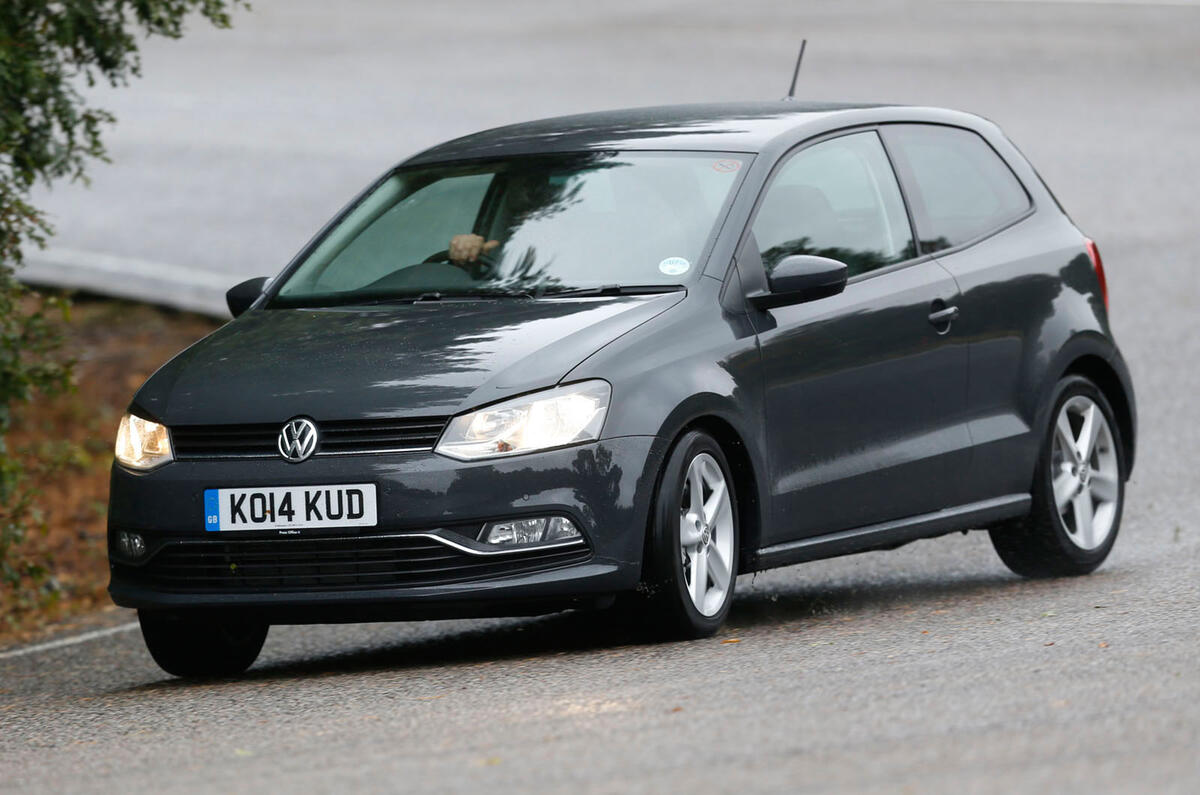
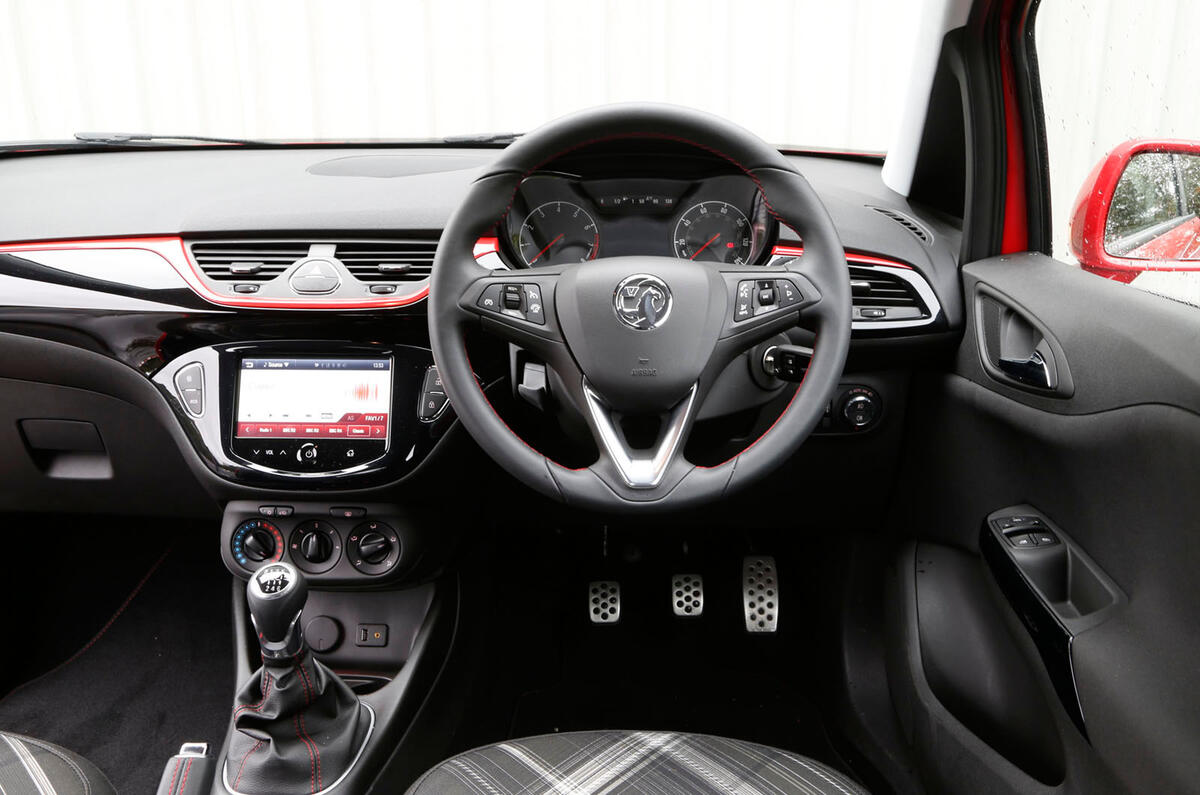
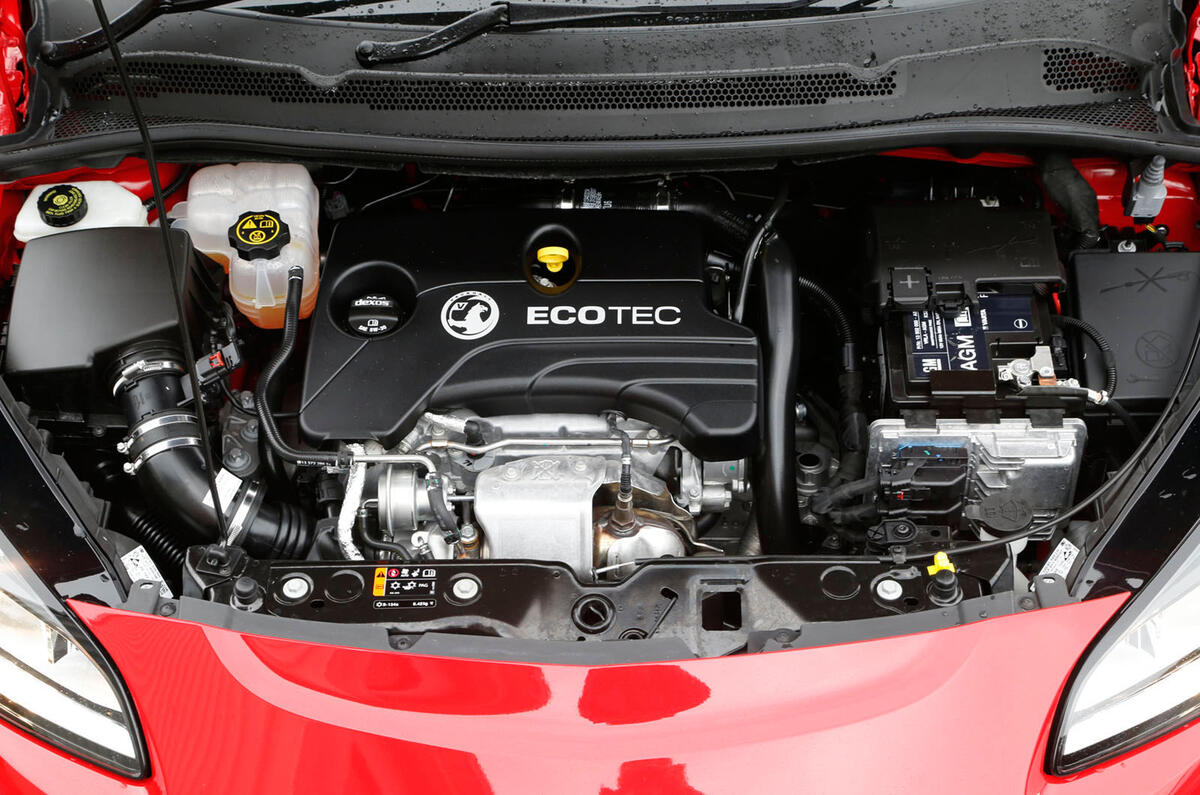
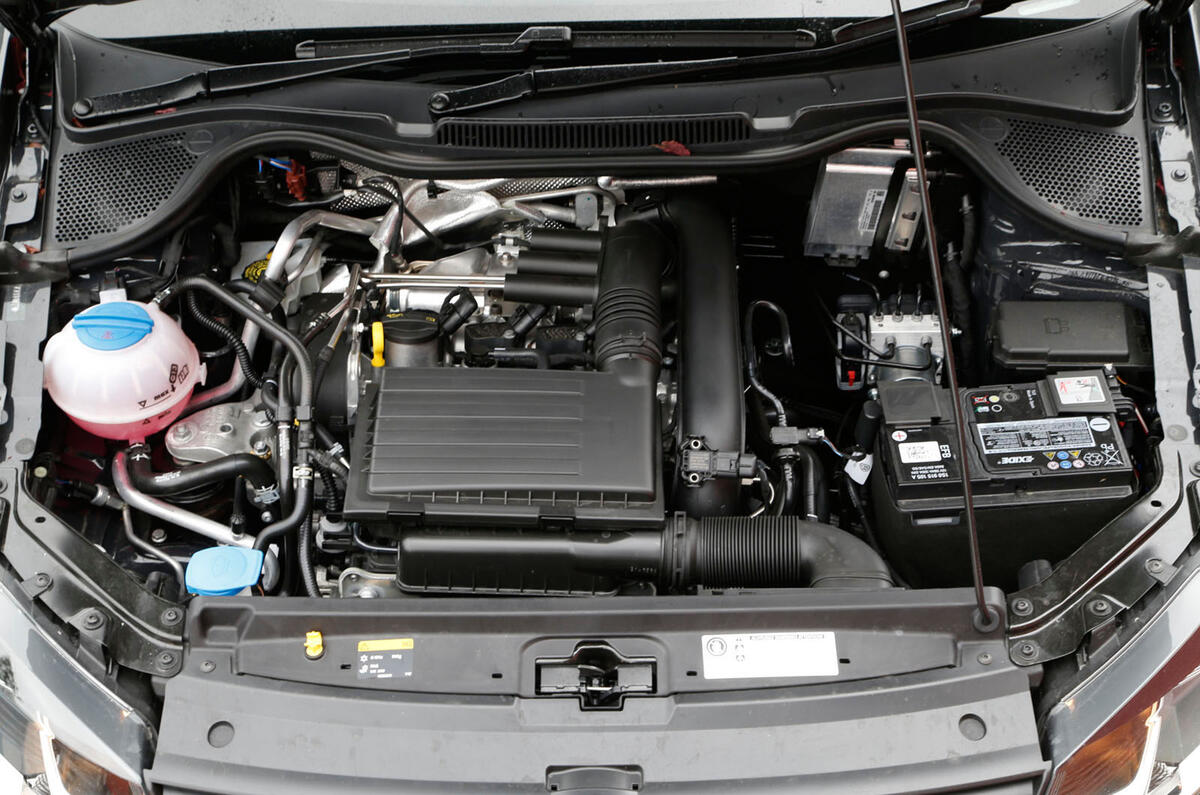
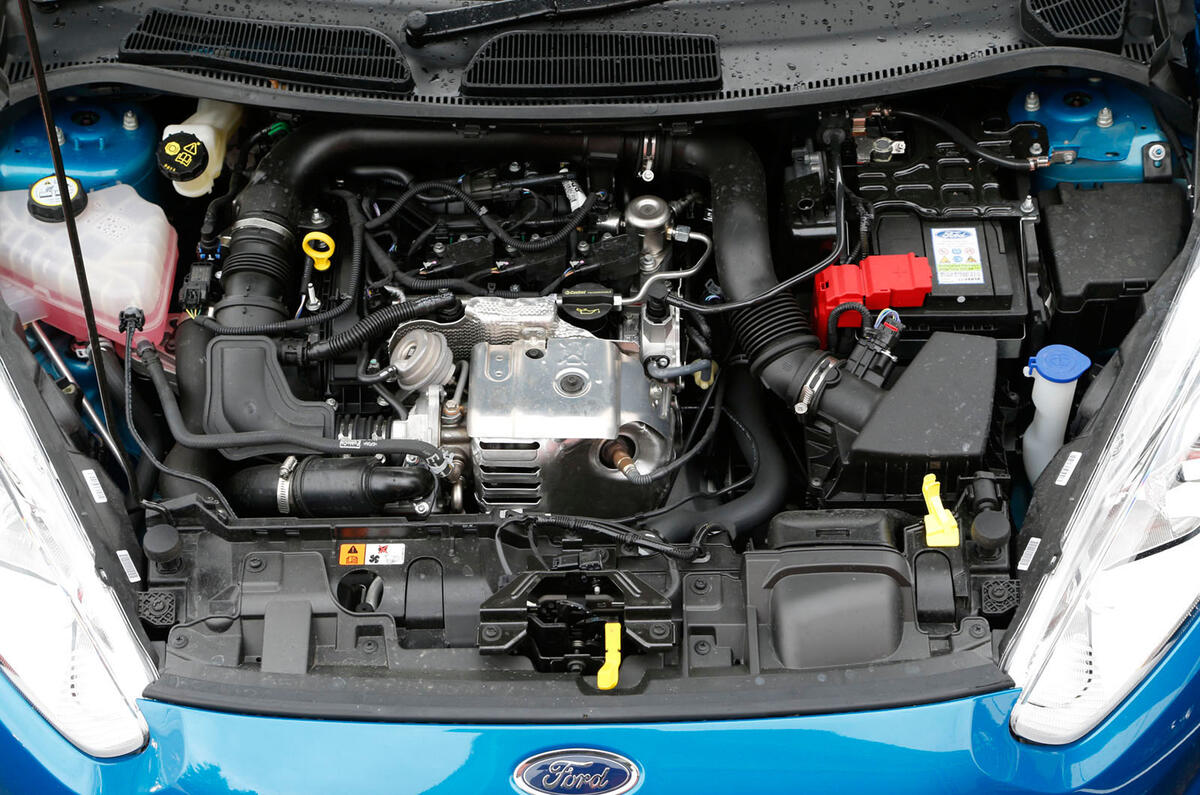

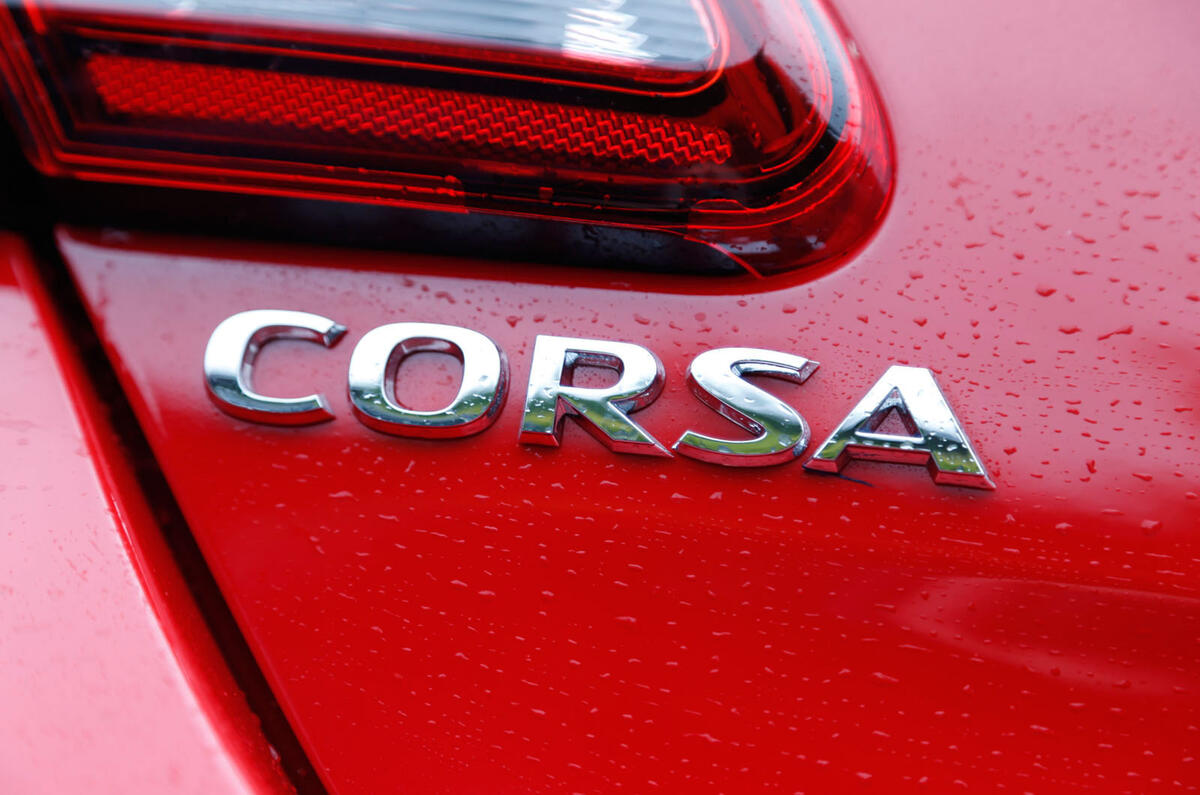
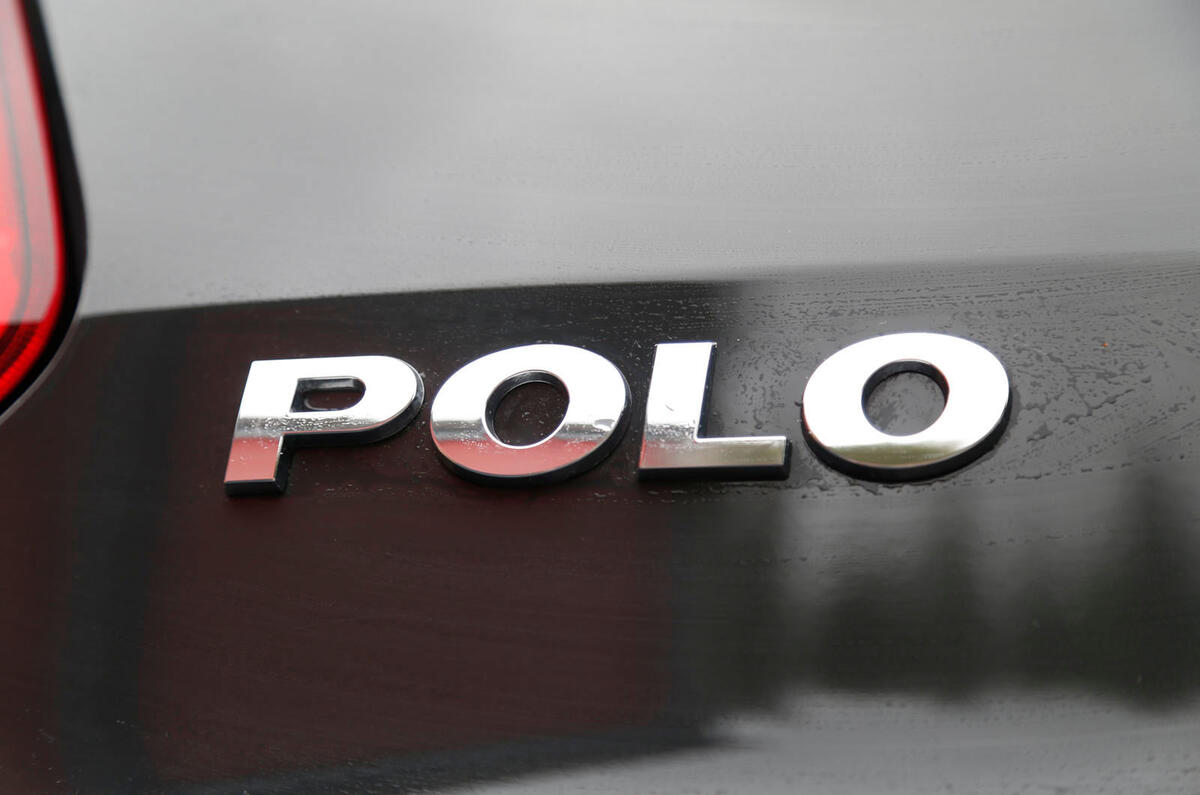
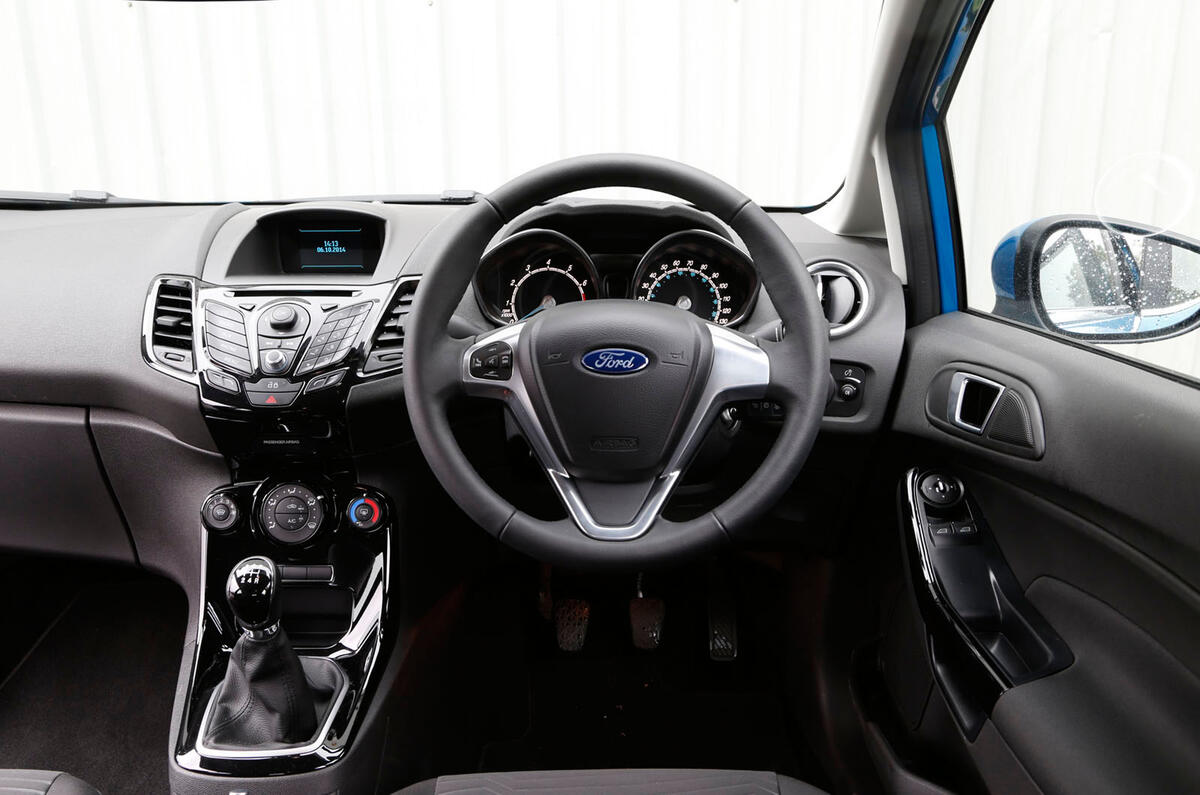
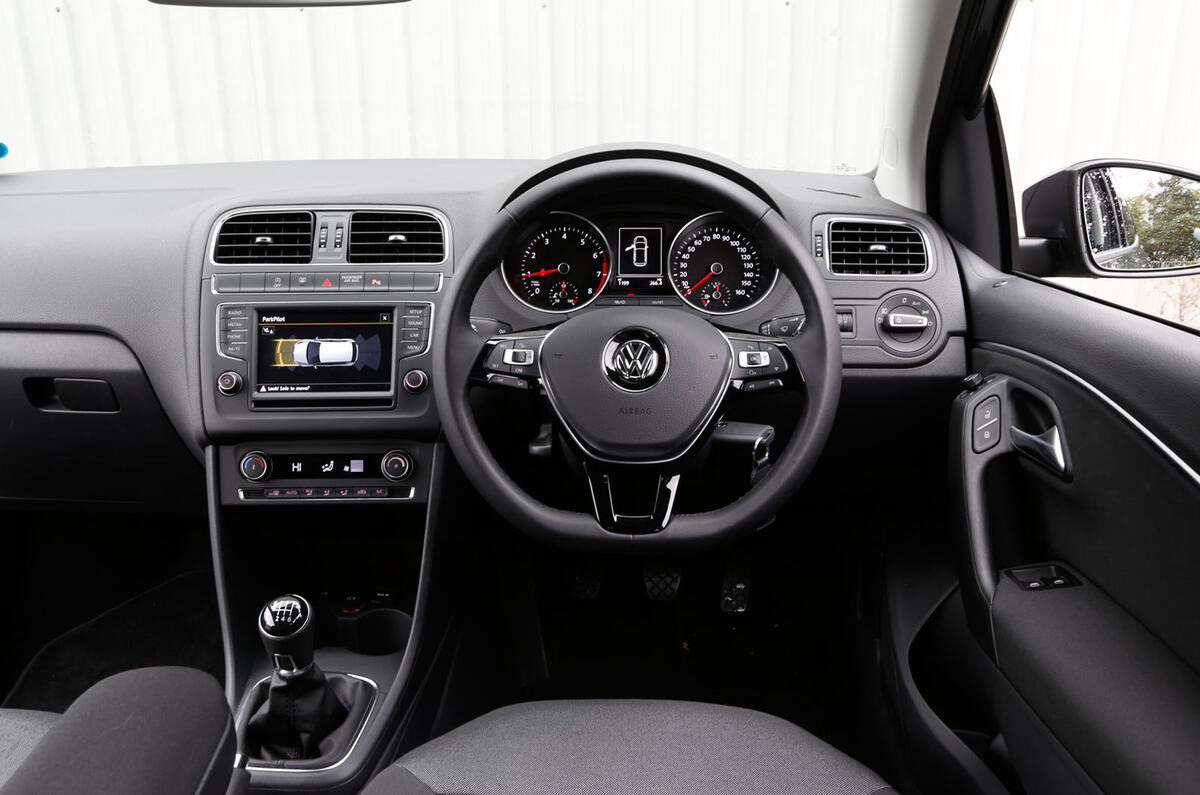
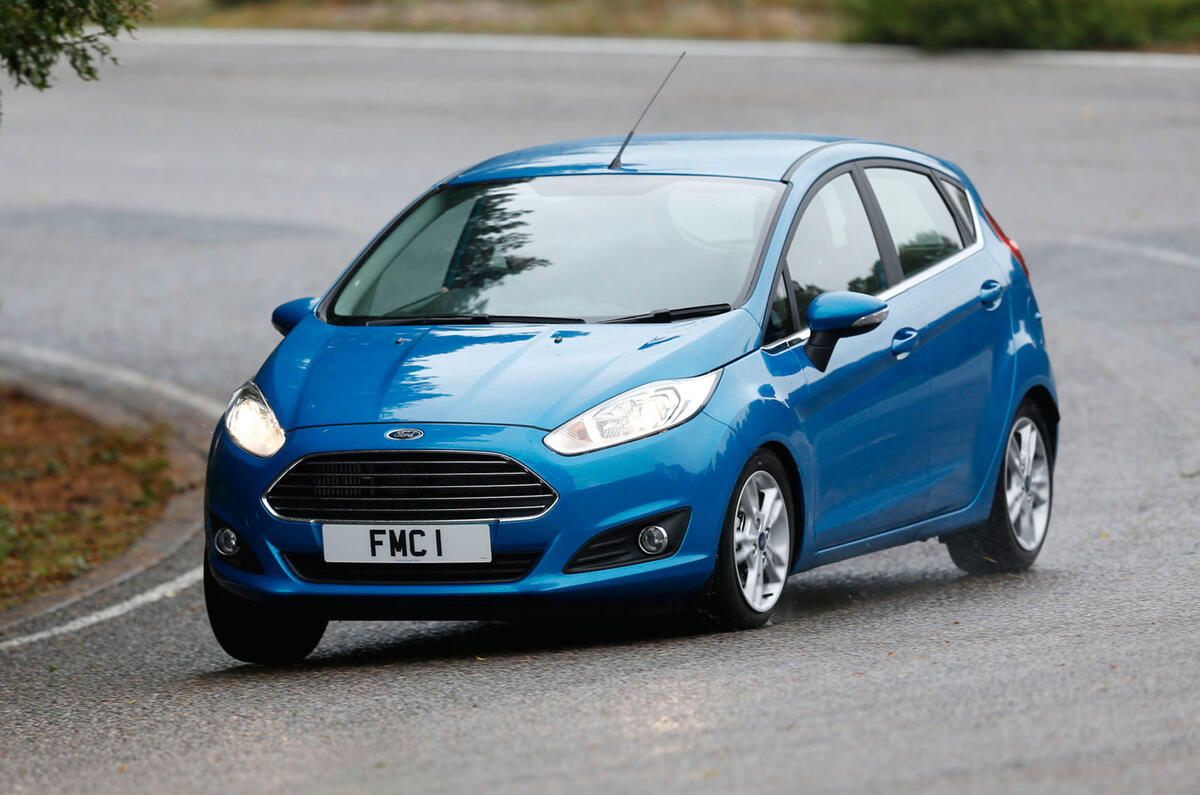
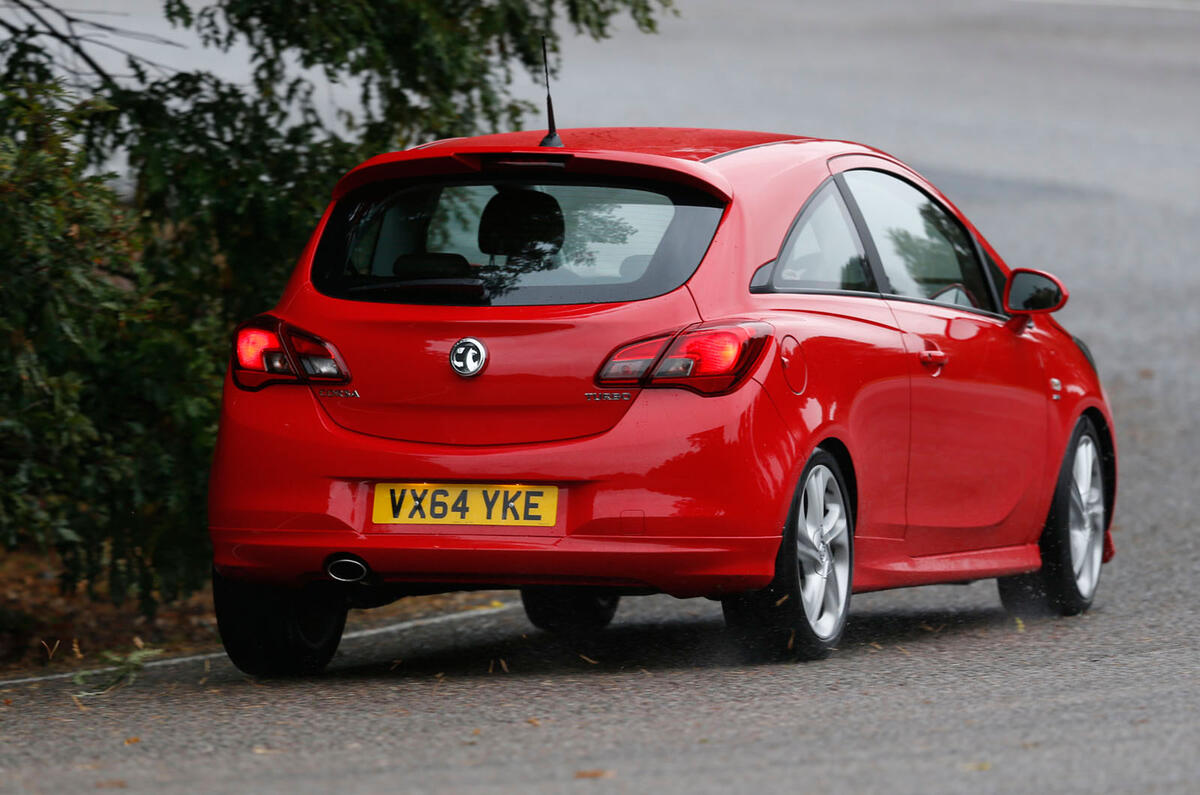
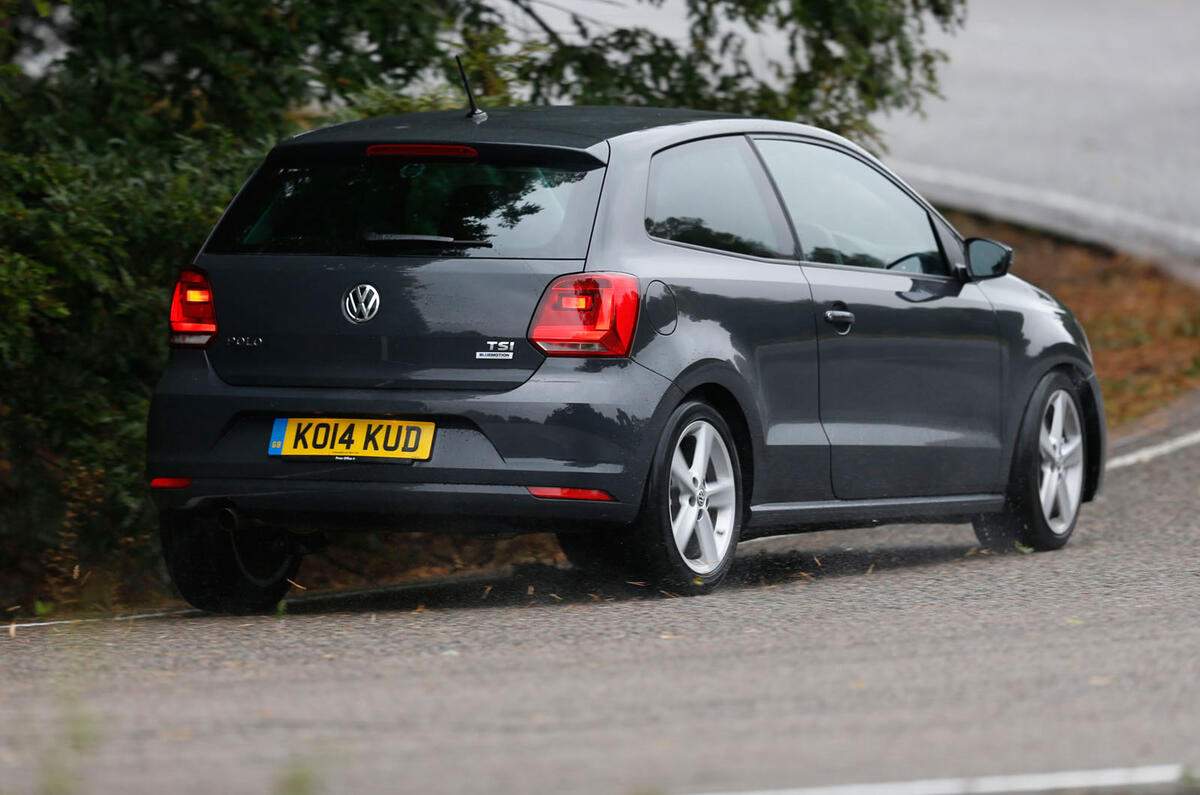
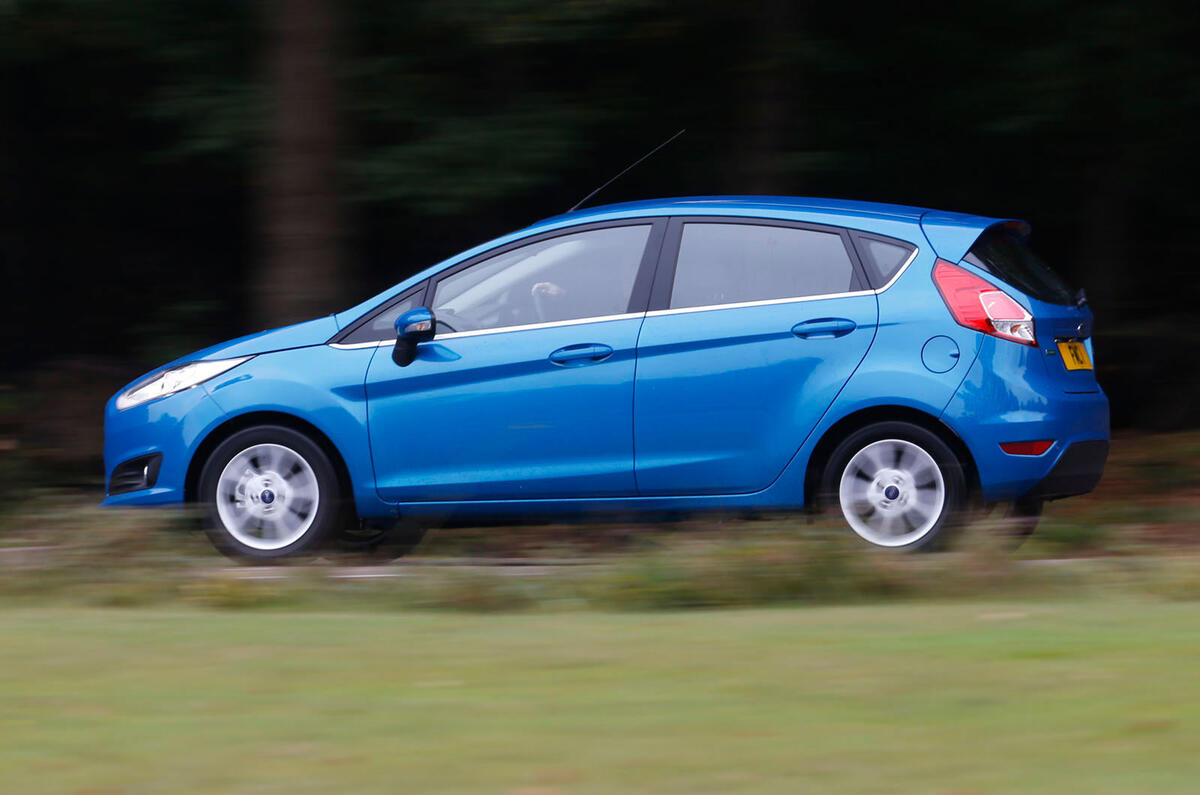
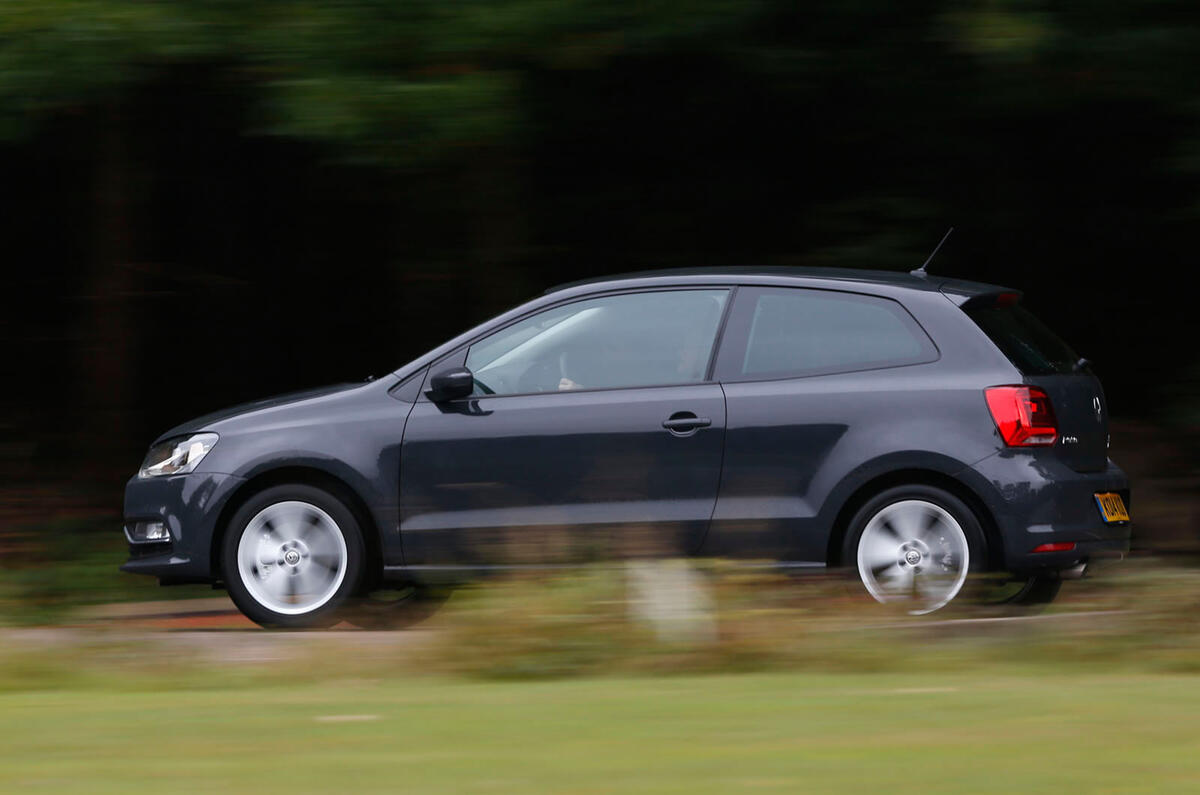
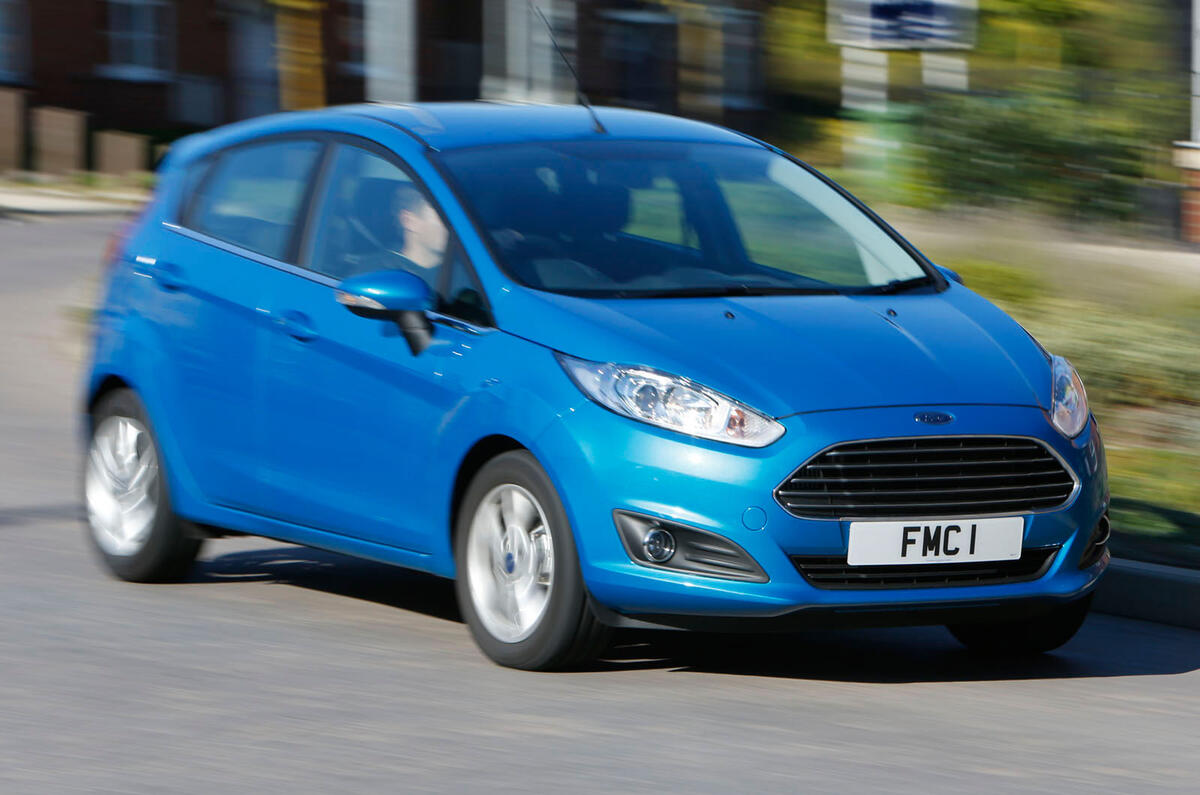
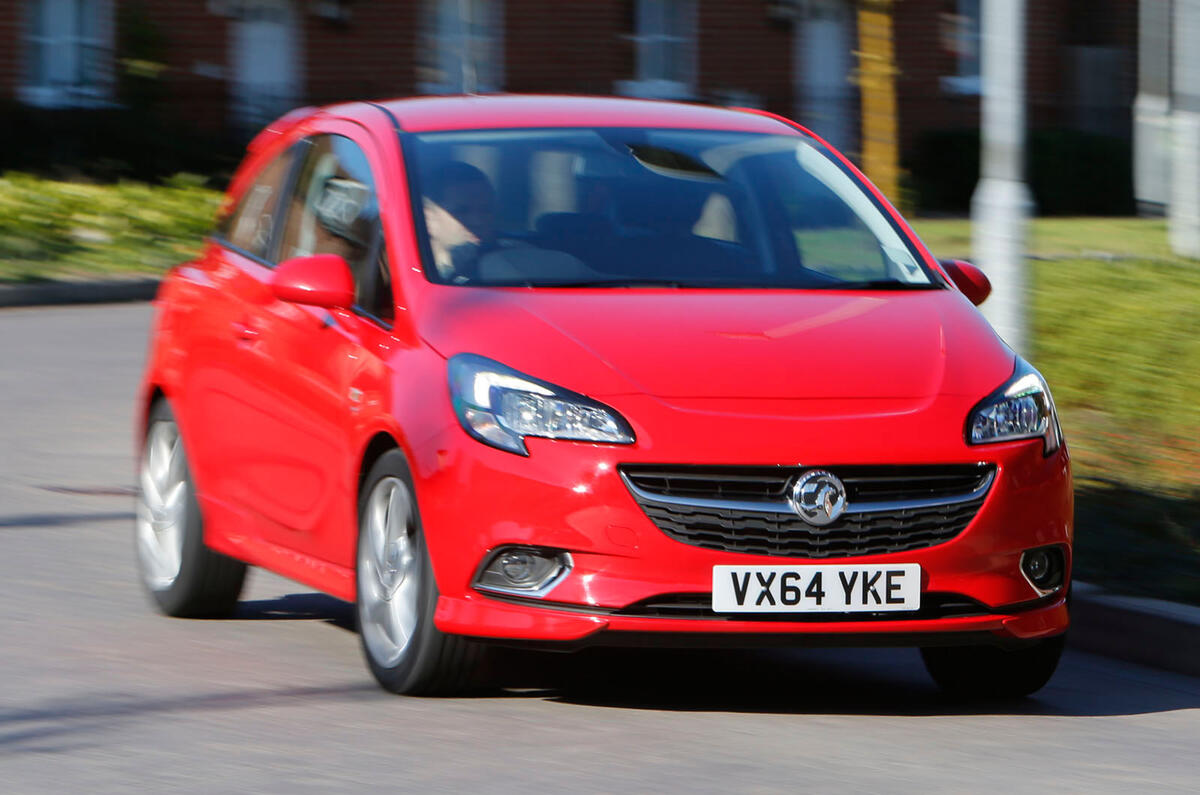
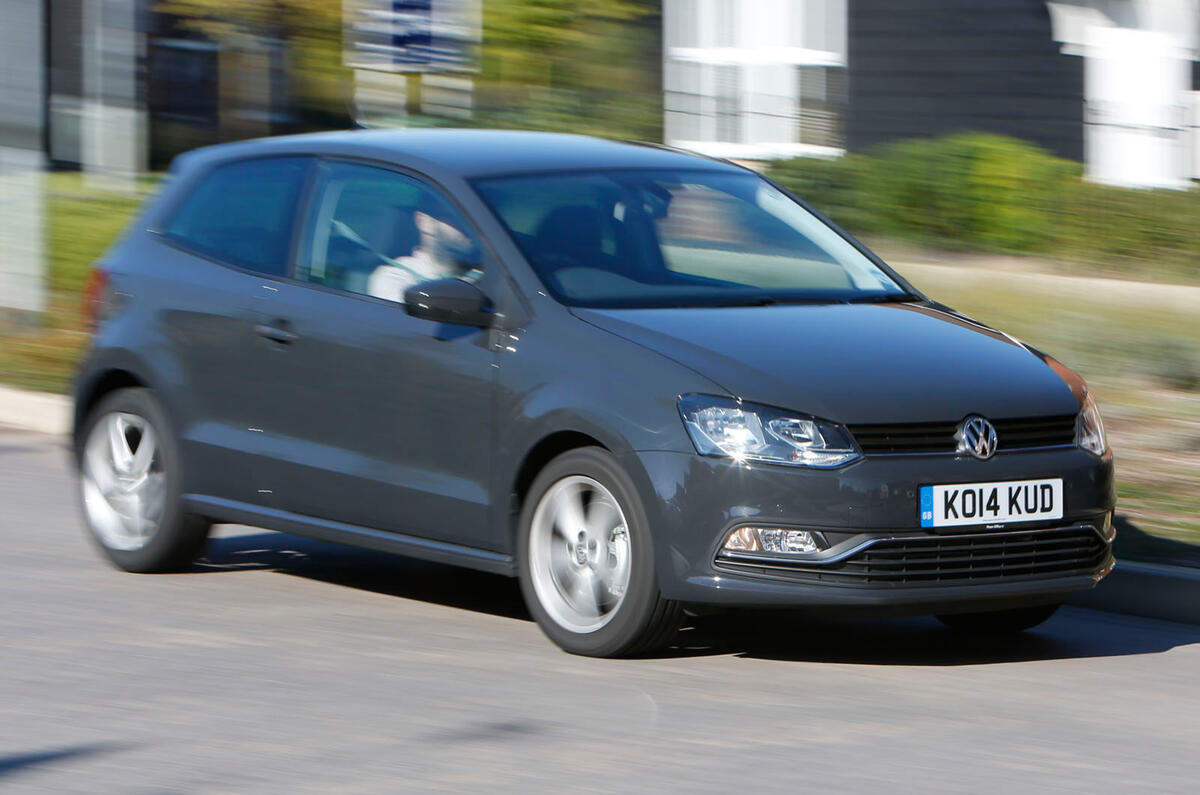
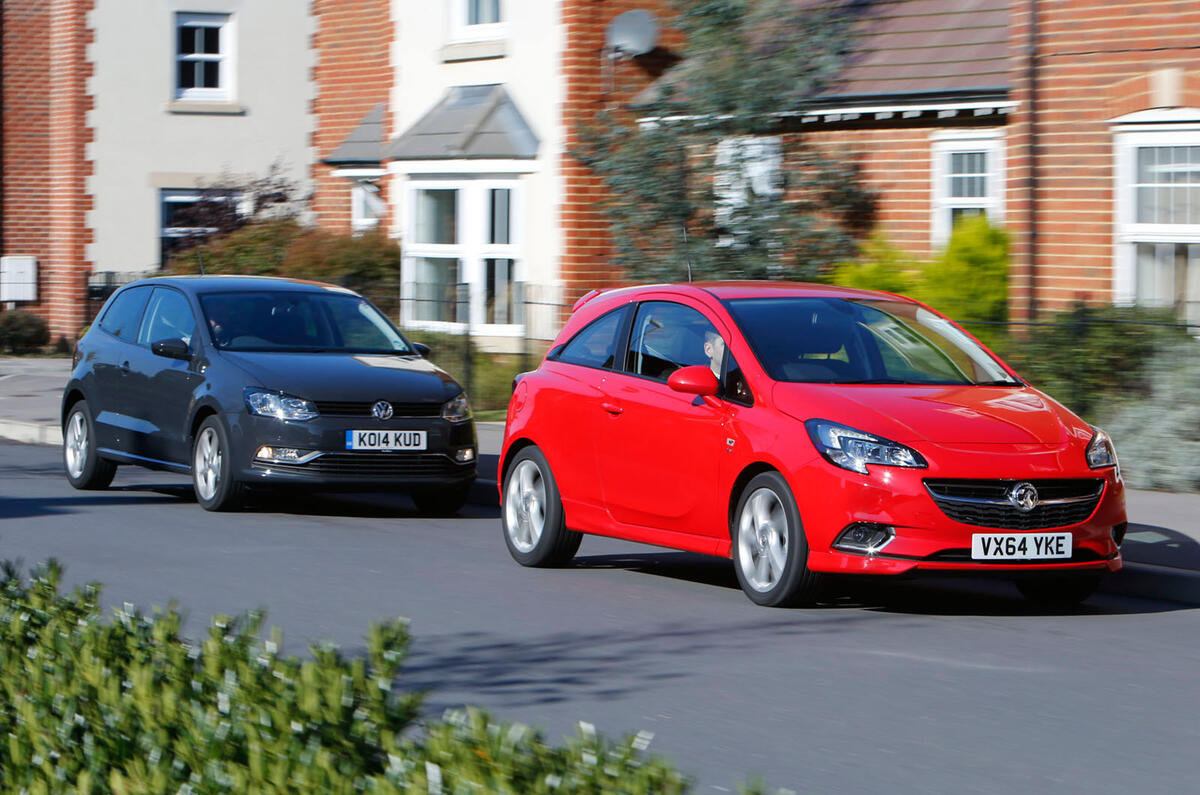
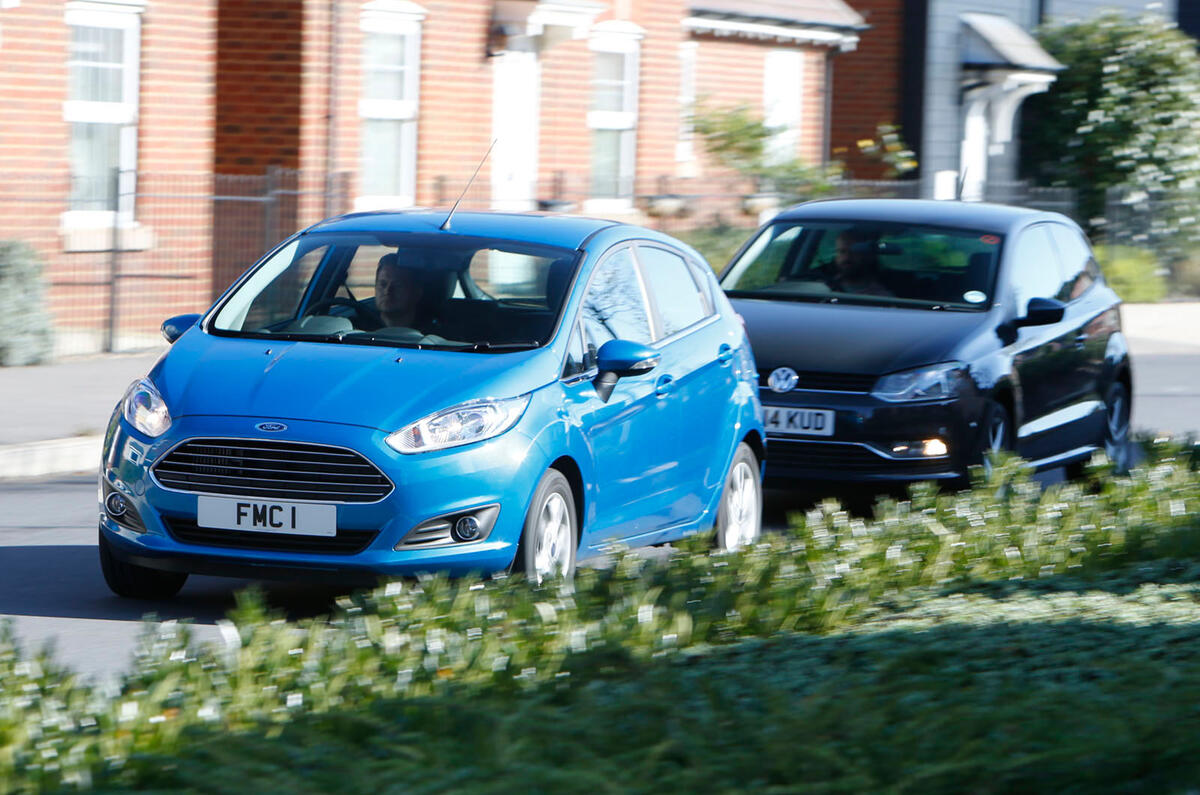
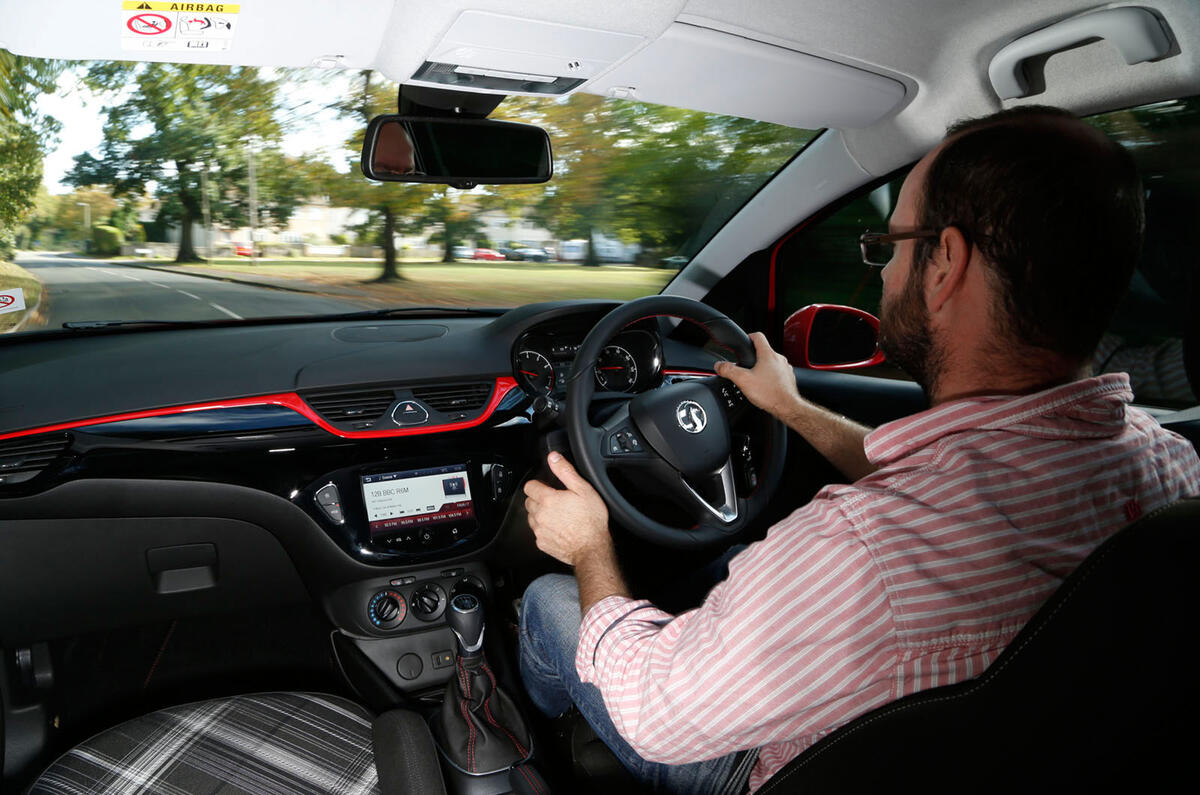
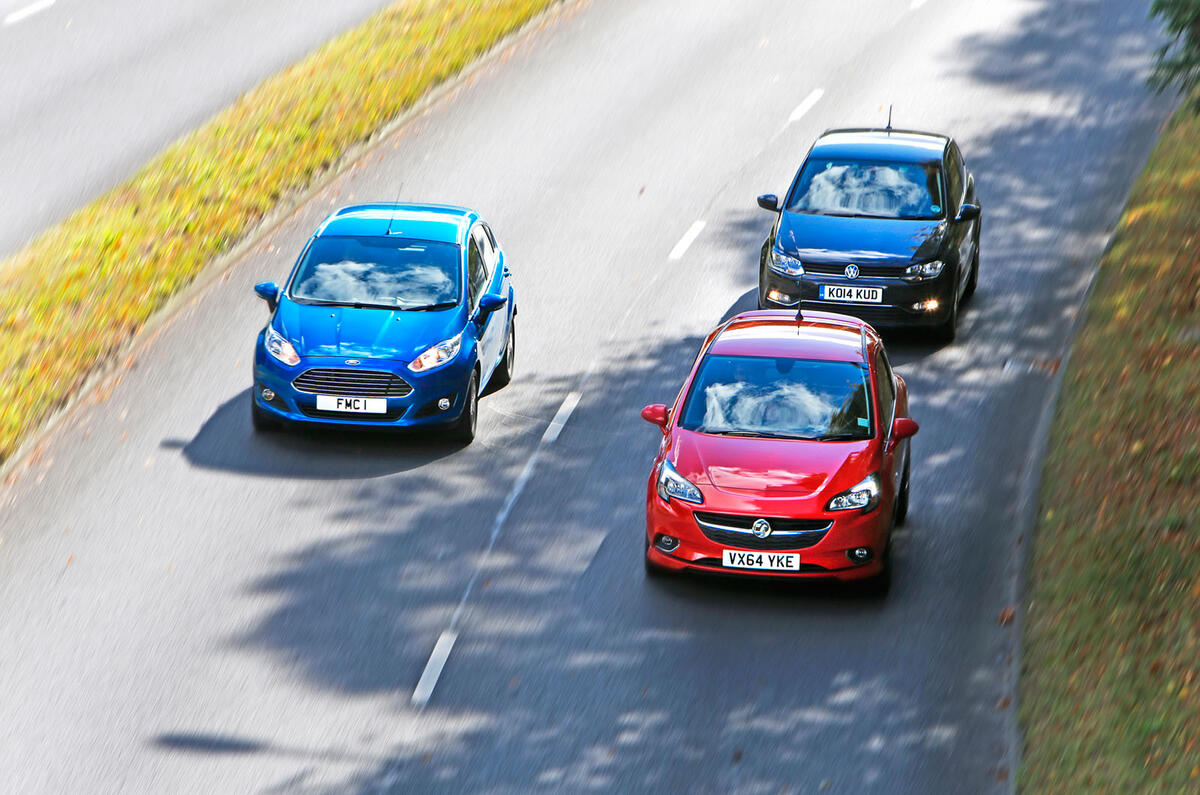
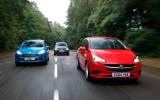
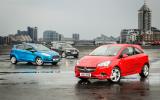
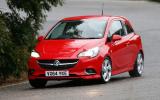
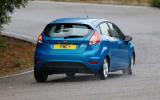
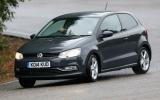
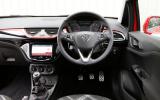
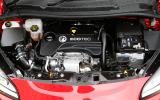

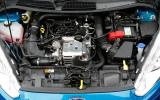
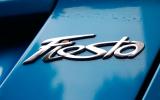


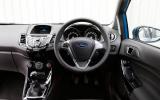
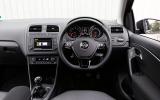
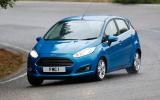
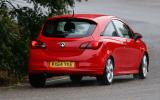
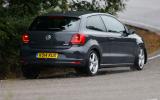
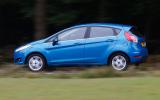
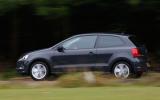
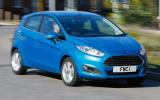
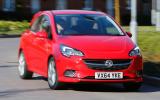
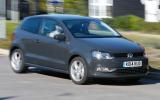
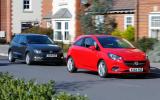








Add your comment
likely correct
According to Autocar stats
Wrong result for me.
The corsa looks the freshest and the dash looks pretty good even next to the polo.
Personally I would chose the polo and would bet in real world driving the new corsa would be a match for them both.